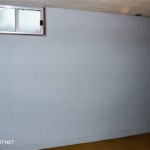How To Insulate Basement Floor
Basement floors can be drafty and cold, especially during the winter months. Insulating your basement floor can help to keep your home warmer and more comfortable, and can also help to reduce your energy bills.
There are a few different ways to insulate a basement floor. The most common method is to install rigid foam insulation boards directly to the floor. Other methods include installing batts or rolls of insulation between the floor joists, or pouring a layer of loose-fill insulation over the floor.
The type of insulation you choose will depend on the size of your basement, the climate you live in, and your budget. Here is a more detailed look at each type of insulation:
Rigid Foam Insulation
Rigid foam insulation is the most popular type of insulation for basement floors. It is available in a variety of thicknesses, from 1 inch to 4 inches. The thicker the insulation, the better the R-value, which is a measure of how well the insulation resists heat flow.
Rigid foam insulation is easy to install. It can be cut to fit the size of your basement floor and then glued or taped into place. It is also very durable and can withstand the weight of heavy furniture and appliances.
Batt Insulation
Batt insulation is made of fiberglass or cellulose. It is available in a variety of thicknesses, from 3.5 inches to 8 inches. The thicker the insulation, the better the R-value.
Batt insulation is installed between the floor joists. It is important to make sure that the insulation is snugly fit between the joists, so that there are no gaps or air leaks.
Loose-Fill Insulation
Loose-fill insulation is made of fiberglass, cellulose, or vermiculite. It is poured over the floor and then leveled. Loose-fill insulation is a good option for basements that have uneven floors or that are difficult to access.
Once you have chosen the type of insulation you want to use, you can begin the installation process. Here are the steps on how to insulate a basement floor:
- Prepare the floor by removing any debris or obstacles.
- Install the insulation according to the manufacturer's instructions.
- Cover the insulation with a vapor barrier.
- Install a new floor over the insulation.
Insulating your basement floor is a relatively simple and inexpensive project that can make a big difference in the comfort and energy efficiency of your home.

Insulating And Finishing An Old Basement Floor Fine Homebuilding

What S The Best Way To Insulate A Basement Slab Greenbuildingadvisor

How To Insulate Your Existing Concrete Slab With Halo S Interra In 5 Easy Steps Buildwithhalo Com

Greenspec Housing Retrofit Ground Floor Insulation

Basement Concrete Floor How To Insulate It
How Would You Insulate Above A Concrete Floor Located Non Heated Garage When There Is 3 To Bring Up Grade Of The Adjacent Room Close In Porch

Greenspec Housing Retrofit Ground Floor Insulation

Installing Rigid Foam Above A Concrete Slab Greenbuildingadvisor

Basement Subfloor Insulation Home Ca

Floor Insulation Types Of Their Advantages








